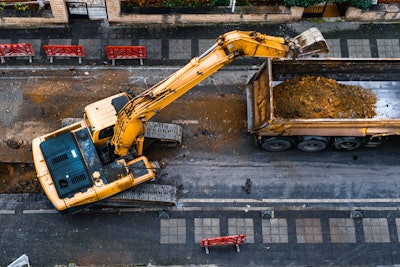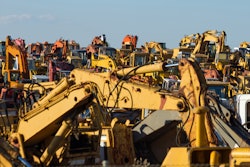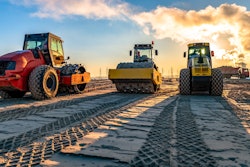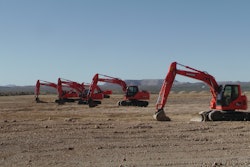
The past three years have really upset the equipment market. Supply chain issues basically stalled the delivery of the new equipment you ordered and needed in 2021 and 2022. Some may have showed up, and then again, probably many did not. And I have to bet many of you suffered sticker shock when the final price tag was created.
What happened next was no surprise. The used equipment market came on the scene with skyrocketing prices for just about any used equipment in running condition. Not a bad situation if you had excess units in your fleet that you could covert to more cash than expected.
But no matter how you look at it, there are contractors and rental companies needing to upgrade their fleets with either new or late model used equipment. Many of you reading this are probably in this situation; figuring out what you may need, what you can sell off or trade-in, deciding if you can “pay the price” for the utility value of the equipment needed to complete your project. Kind of a sticky situation to be in.
Let’s look at the financing option you have available to you. Hopefully, you can find a couple that will not cripple your cash flow or the ability to take on new work.
Financing today is a big deal because we have not had to deal with the interest rates we are now facing. Me, I like to base financing decisions on the importance of the units being purchased and the availability of the equipment I need in the markets I work in. I really hate to take on a fixed debt payment that lasts 60-72 months if I can avoid it. I also hate to take on long-term leases, which are basically the same as a note purchase agreement with perhaps less benefits than buying a unit and financing it. In the end, what is required is a careful analysis of your cash flow, free cash flow, tax position (do you expect taxable income or not) and your relationship with your bank in terms of your bank covenants. Depending on your financial condition, there may be financing options that better match up with what you can handle.
What options do we have? Here are some potential choices:
- We can buy it and finance it over 60-72 months.
- You can lease it with a residual value option at the end of the lease.
- You can rent it and avoid all the costs of ownership and operation.
- You can enter a rent-to-buy program that allows you to demo the machine and then buy, by having part of the rental payments applied to the cost of the unit.
- With interest rates in the 7% + range these days, it pays to try to get the seller to buy down your rate and thus reduce the impact on cash flow.
- Because you do not want to overdo it by purchasing too much equipment in a short period of time, you may want to refurb used units in house, or look for used units for sale that you can refurb.
Each option has an impact on cash flow, collateral value, tax expense, gross margins and your covenant calculations. As I said, in this environment, you have to carefully think this through in terms of how many ACTUAL HOURS the machine will be used on jobsites; not sitting on the jobsite, but actually working on the jobsite. If you cannot tell me what that number is expected to be for the next three years, maybe you should not be considering a five- or six-year commitment to finance the purchase.
Buying a unit and financing it works if you have used units to trade-in or sell off to apply the proceeds to the purchase. It also helps if business is strong and generating taxable profits that you would like to avoid. For example:
- If I sold a lot of used units and have tax recapture to consider, I may want to purchase and take advantage of bonus depreciation and Section 179 deductions.
- If I have a history of producing taxable profits using a purchase to have Uncle Sam help pay for the unit and defer the tax.
- If I have no bank issues, where adding to my fixed payments or increasing my debt will cause a problem.
- Purchase for $100,000. Tax write-off of $80,000 reducing taxes by $28,000 give or take.
- I am comfortable that I will have at least 75% time utilization in the field with this unit.
- That $100,000 unit will have an annual debt service of approximately $24,000 a year.
- Add on your cost to operate the unit and that 24% of the unit cost increases to 30%.
- To stay on track, you need to measure both the time and dollar utilization of the unit (like rental companies do). You need to bill $30,000 a year for that $100,000 unit to cover debt service and maintenance.
That’s a lot to think about.
Leasing is somewhat similar to the purchase because you have a long-term commitment, usually an up-front payment and a residual option of at least $25,000 for a $100,000 purchase:
- It is another fixed payment. I used $100,000 again as the purchase price.
- The residual is a positive because if you don’t like the machine, you can return it and not pay the remaining $25,000.
- If you have a capital lease (pay off basically 100% of the purchase price), you may be eligible for the bonus and 179.
The lease will be considered a long-term commitment going forward. So, if you have bank issues, you may want to reconsider the lease if you think the lease payments are not considered to long-term obligations. There are many ways to structure a lease transaction and thus manipulate your payment plan.
Rent-To-Own
I like it. You get to try out the unit and then decide if you want to buy it. And if you buy it, you get the “purchase benefits” outlined above. The rental rates will be somewhat higher than a pure rental transaction but are 100% expensed for tax purposes. In most cases, these rates are offered by equipment dealer representing the major brands.
On the downside, the material costs to operate the unit remain with the seller. But if you damage it, you will have to pay the repair bill.
Renting
The cost of ownership and the cost to operate mainly remain with the lessor. You can use it a day, a week, a month or any extended period.
- Work out an annual rate sheet at beginning of year.
- If it breaks, they fix it or replace it.
- You need to provide a certificate of insurance covering the value of the unit. (Same for rent-to-own).
- When you need it, they may not have it. You have to have to have contact with multiple suppliers.
- The least risk to cash flow and bank covenants.
- If you damage it, you will pay.
- Less staff required to move or repair equipment.
Other Options
Those are not the only options available to you and your business. For example you could share equipment with other contractors, or you could sub out work where expensive machines are required.
If I use a unit valued at $100,000, the total amounts paid for principal and interest are not materially different, unless you buy down the interest rate or push out payments into the residual payment. This is because residual payment leases allow you to keep your cash until the final payment is made or not made, if you turn the unit in.
In my mind, you do not want to put yourself into financial hardship to do your work when you have other options available.



















